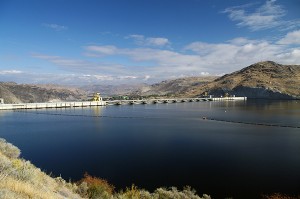Home »

Ktunaxa and B.C. agree to seek renewal of Columbia River Treaty
Negotiators for the Ktunaxa Nation and the Province of British Columbia have reached agreement on a set of principles, the implementation of which is intended to guide the renewal of the Columbia River Treaty.
These principles are outlined in a Joint Engagement Report agreed to by both parties and includes provisions for the assessment and management of Ktunaxa cultural heritage resources.

“No group in British Columbia has been more affected by the environmental, economic and cultural impacts of the Columbia River Treaty than First Nations,” said Kathryn Teneese, Ktunaxa Nation Council Chair. “These impacts can still be felt in our communities today. As Ktunaxa, we have a responsibility to care for the land, which is why it was vital that we participate in the joint engagement process with the province. It is a testament to the hard work of both governments we were able to come to such a broad agreement on how we will work together towards the renewal of the Columbia River Treaty.”
However, while the province and Ktunaxa Nation are in agreement about the renegotiation of the treaty, much more can be achieved, Teneese said.
“While we have achieved a remarkable amount of consensus, our negotiators have not reached common ground with B.C. on all matters relating to the possible renewal of the treaty,” continued Teneese. “We have sharply divergent views on whether the restoration of upper Columbia salmon is a matter that should be addressed within a renegotiated Columbia River Treaty. Our view is that salmon restoration is largely about the management of dams, which currently block fish passage and the management of river flows on both sides of the border and both of these management issues are at the heart of the Columbia River Treaty. The Joint Engagement Report states that salmon restoration in the upper Columbia is a matter of federal government jurisdiction and would require a joint effort between the U.S. and Canada. This trans-boundary cooperation is essential if we are to restore upriver salmon.”
Five dams without fish ladders are what stand in the way of the Pacific salmon being allowed to return to traditional spawning waterways in the upper Columbia River.
On Monday, March 17, members of tribes on both sides of the border, along with scientists and others involved in a special conference looking into restoring salmon to the upper reaches of the river received a Grand Coulee Dam tour.
The conference is taking part this week Spokane, Washington.
e-KNOW







